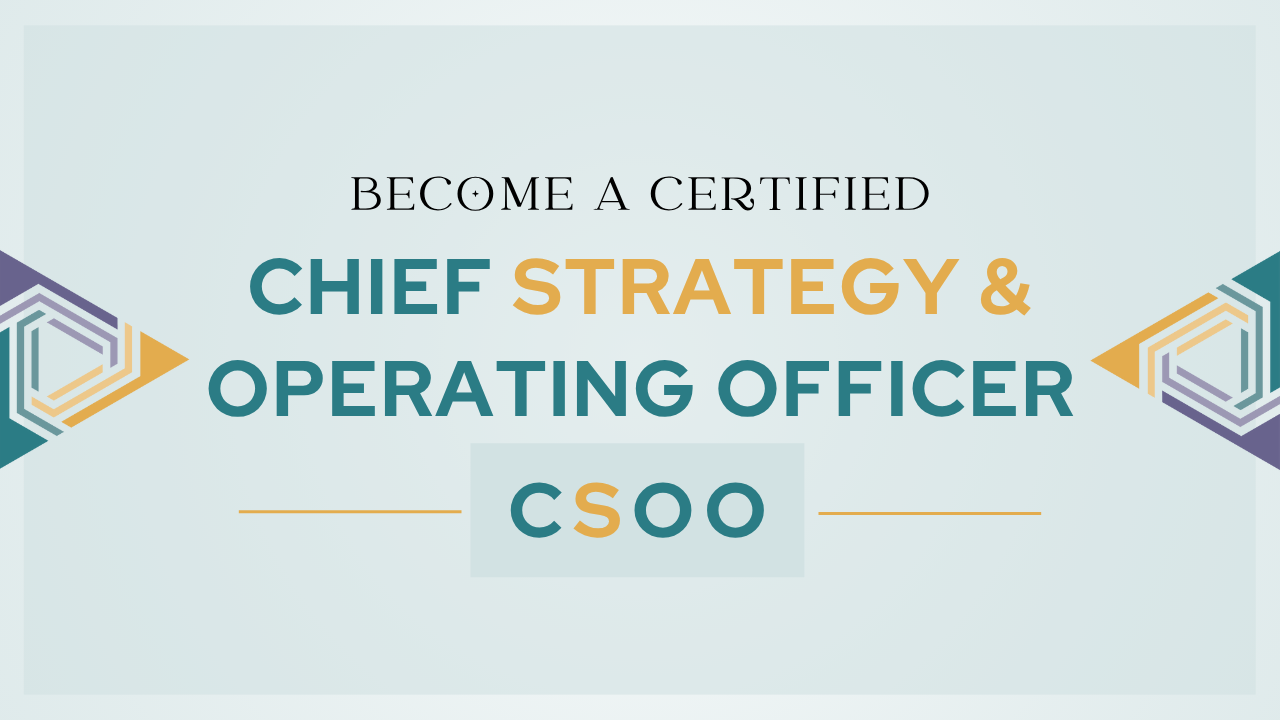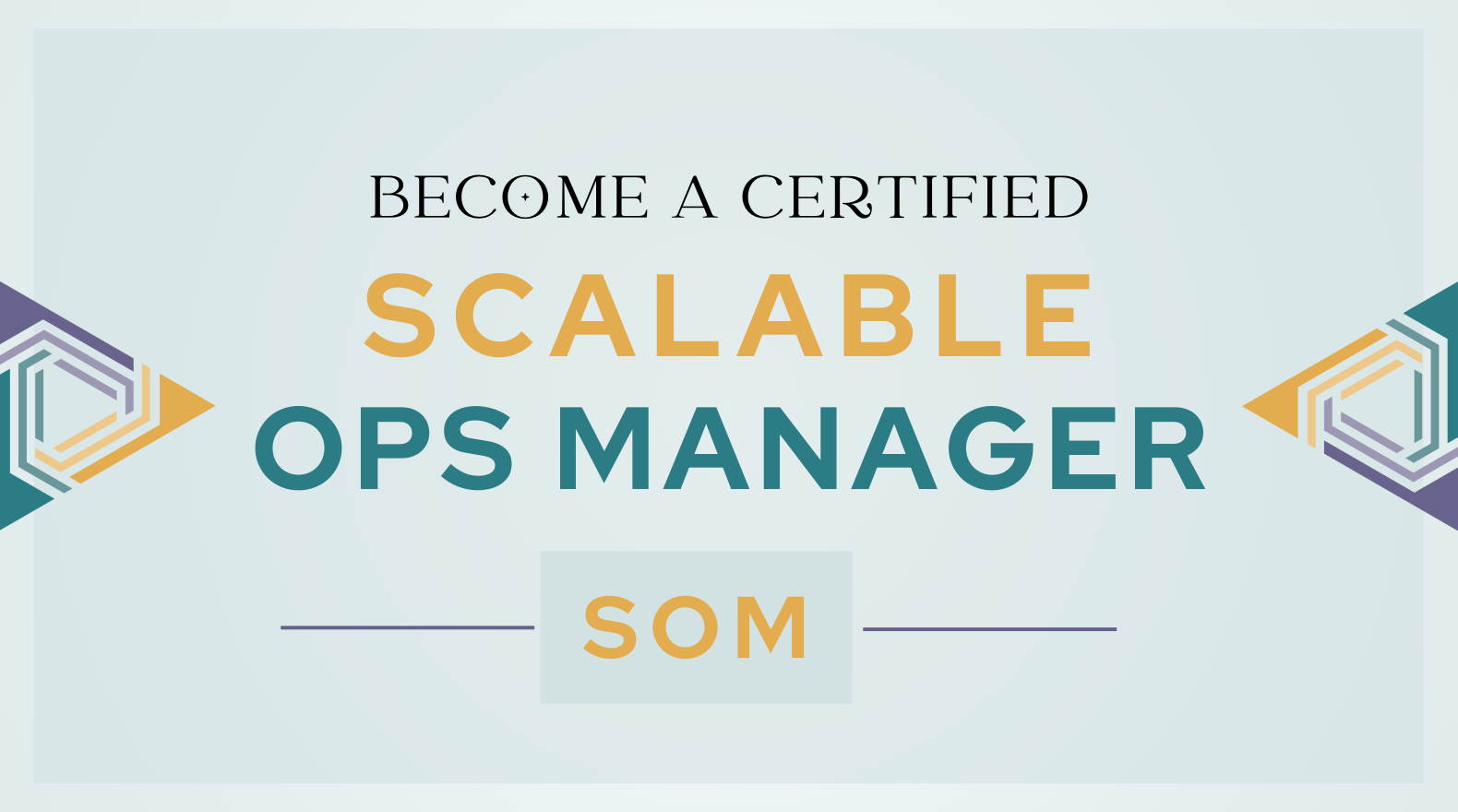
Have you reached the point where you know you are ready for more than managing the daily operations?
As an Operational Leader, your role is often about making sure projects are completed, the team is supported, and the founder isn’t pulled into every detail.
That work is valuable, and it allows the business to grow.
At some stage, however, many operational leaders feel called to step into a higher level of influence.
They want to move beyond strategic execution and become the partner who helps shape the direction of the business.
That shift is what it means to step into the role of Chief Strategy & Operating Officer (CSOO).
The CSOO role is about elevating your leadership, building the foundation for long-term scale, and partnering with the founder to design the future of the business.
Here is what it looks like to graduate into that level of leadership.
From Managing Projects to Driving Strategy
Operational Leaders are known for being strong at execution.
They keep the team on track and ensure the right things get done.
They look at how all departments support the strategic goals of the company.
The CSOO does all of this as well as the following:
-
They look at what operational levers will unlock the next level of growth
-
They look at where resources are being spent that do not serve the vision
Instead of managing projects, you are shaping the roadmap and guiding the team to deliver on it.
From Being a Bridge to Becoming a Strategic Partner
Operational Leaders often serve as the link between the founder and the team.
They help bring ideas to life and keep operations moving.
The CSOO role has an additional element to all of this.
You are no longer only the connector.
You are a strategic partner who influences decisions at the leadership level.
You are looking well ahead and ensuring operations fuel the vision rather than follow behind it.
This means anticipating challenges, identifying opportunities, and ensuring the structure and systems are in place for sustainable scale.
From Reactive Problem-Solver to Proactive Capacity Builder
As an Operational Leader, much of the work involves troubleshooting.
You often step in when systems are strained, people are overloaded, or communication breaks down.
Whereas a CSOO, you build capacity before those issues arise.
You anticipate what will be needed for the next stage of growth and put it in place now.
This might look like:
-
Documenting and automating processes before the team expands further
-
Hiring for the future needs of the business, not only today’s gaps
-
Aligning investments in systems and tools that align with the growth strategy
From Overseeing Execution to Leadership Development
As an Operational Leader, you are often ensuring that team members complete their responsibilities.
In the CSOO role, your focus shifts to developing leaders within the organization.
This involves:
-
Hiring for outcomes instead of tasks
-
Developing team members into leaders who can confidently run their departments
-
Creating a culture where accountability is built into the way the team works
When leaders emerge at every level, you are free to focus on the strategic direction instead of the daily oversight.
From Short-Term Planning to Long-Term Scalability
Many Operational Leaders focus on quarterly goals and project timelines.
A CSOO balances that with a long-term perspective.
Scalable growth requires intention, so the CSOO role involves asking:
-
What structure will the business need in two years to sustain the vision?
-
What bottlenecks or risks should we eliminate now before they limit growth?
-
How can resources be aligned today to support the future direction of the business?
This long-term focus is what makes the CSOO role essential for sustainable growth.

Your Path to Becoming a CSOO
Graduating from an Operational Leader into a CSOO role is about building on your strengths and expanding them into strategic leadership.
Here are the core shifts that set you apart:
-
Lead outcomes instead of tasks
-
Partner in strategy as well as execution
-
Build capacity before it is needed
-
Develop leaders at every level
-
Focus on long-term scalability in addition to quarterly planning
Making these shifts positions you as the operational leader who helps design and drive the future of the business.
If you are ready for your next level of leadership, this is the time to step forward.
At the Strategic Ops Institute, we train and certify operational leaders to grow into a Strategic Leadership role.
Our programs equip you with skills to simplify operations, scale businesses sustainably, and help founders to stay focused on their vision.
Click here to learn more about our certification programs and see how you can step into your next level of operational leadership.

by Crista Grasso
Crista Grasso is the Founder of the Strategic Ops Institute and the Lean Scaling Co, and host of the Simplify to Scale Show. She specializes in training and certifying exceptional Operational Leaders to become Strategy + Operations Leaders (SOLs) and become experts at simplifying, streamlining, and sustainably scaling businesses.



